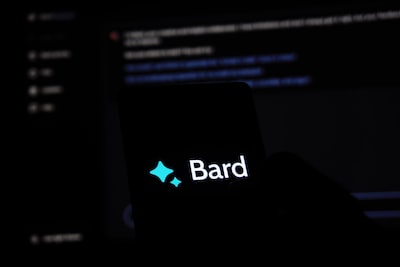In the digital age, educators are not only responsible for guiding young minds but also for navigating the treacherous waters of online security. With the increasing prevalence of cyber threats, such as phishing, it has become imperative for teachers to arm themselves with the necessary tools to protect their digital identities and those of their students.
Phishing protection for educators has emerged as a pressing concern, as hackers have honed their skills in infiltrating educational systems and exploiting unsuspecting victims. The rise of artificial intelligence (AI) offers a glimmer of hope in this battle against phishing attacks.
A new wave of AI-powered anti-phishing strategies specific to the needs of educators is poised to revolutionize the way teachers safeguard their digital realms. This article aims to shed light on these cutting-edge solutions, exploring their mechanisms, potential benefits, and limitations.
As the threat landscape constantly evolves, it is crucial for educators to stay one step ahead and fortify their defenses against the ever-present danger of phishing.
In this ever-evolving digital landscape, where technology is becoming ubiquitous in classrooms, the specter of cyber threats looms large over educational institutions. Schools, once regarded as sanctuaries of learning, have now become battlegrounds where malicious actors exploit vulnerabilities to launch phishing attacks.
The repercussions are dire, as sensitive student information, financial data, and vital educational resources become potential targets. As educators strive to empower the next generation, they must also equip themselves with weapons to combat these insidious invasions.
Unmasking the phishing foes calls for AI-powered strategies that dexterously navigate the treacherous waters of cybersecurity.Online learning platforms, a lifeline during the pandemic, have inadvertently opened the floodgates for cybercriminals to infiltrate classrooms with their deceptive schemes.
These digital scammers lurk in the shadows, disguising their malicious intent behind seemingly harmless emails or hyperlinks, aiming to deceive unsuspecting educators and students. One wrong click, and the entire system could be compromised, leaving schools vulnerable to data breaches and disruption of academic activities.
To fortify the frontline, educators must embrace the power of Artificial Intelligence (AI) to counteract these subtle yet dangerous threats. AI, with its ability to swiftly analyze and detect patterns, offers schools a powerful shield against phishing attacks.
Machine learning algorithms, trained on vast datasets of known phishing attempts, can swiftly identify suspicious emails, circumventing the uncertainties that plague human discernment.However, the battle against cyber threats demands more than mere detection.
Educators must engage in proactive initiatives, empowering students to become the first line of defense. By equipping them with the knowledge and skills to identify and report phishing attempts, schools can foster a culture of digital resilience.
Educators must emphasize the importance of skepticism and critical thinking within the digital realm, enabling students to navigate the treacherous waters of the internet with caution and astuteness.Nevertheless, no AI-powered strategy can be foolproof without the continuous effort of educators in staying abreast of emerging threats.
Cybercriminals are constantly evolving their tactics, devising new ways to exploit vulnerabilities and deceive even the most sophisticated defense systems. Educators must never rest on their laurels, but rather, remain vigilant, adapt to changing circumstances, and collaborate with cybersecurity professionals to augment their defenses.
In the fight against cyber threats, educators must not shy away from embracing AI-powered strategies that can arm them against the perils of phishing. By unmasking the foes that masquerade as friends, schools can safeguard their digital sanctuaries and ensure the holistic development of their students.
Only through a unified effort, bolstered by the strength of cutting-edge technologies, can educators turn the tide and reclaim the safe havens of learning that our students deserve.
Table of Contents
Understanding the growing threat of phishing attacks.
Phishing attacks are a growing problem online, targeting unsuspecting individuals and organizations with deceptive tactics. It is important to uncover the perpetrators behind these attacks in order to help educators effectively combat these cyber threats.
In this guide, we explore the psychology and strategies used by these criminals, highlighting their motivations and techniques. With the help of AI, educators can now proactively identify and prevent phishing attempts before they cause significant harm.
This guide provides tools and techniques for educators to analyze suspicious emails and recognize the signs of a phishing attack, enabling them to protect themselves and their institutions from falling victim to these schemes. Stay informed and empower yourself with the knowledge to fight against cyber threats.
The role of AI in combating cyber threats.
In today’s digital age, schools are not immune to the pervasive cyber threats that have affected businesses and individuals. As more schools use technology to improve learning, they also unintentionally expose themselves to potential cyber attacks.
Cybercriminals are getting smarter, so educators must use AI-powered strategies to protect their schools and students. AI can analyze data and detect patterns to identify threats before they enter the school’s network.
By combining AI, cybersecurity experts, and vigilant educators, schools can stay ahead of cyber threats. Given the importance of technology in education, it is crucial for educators to prioritize cybersecurity and use AI-powered solutions to protect their students and institutions.
Are schools prepared to uncover phishing attempts and combat cyber threats?
Empowering educators with advanced AI-driven tools.
In today’s digital age, educators are at the forefront of a new battle – defending against dangerous cyber threats. As technology continues to enter every aspect of education, the potential for phishing attacks grows.
But don’t worry, innovative AI strategies empower educators and arm them against these harmful enemies. With advanced tech tools, educators can reduce phishing risks and level the playing field.
They now have access to email filtering systems that identify suspicious emails and anti-malware software that protects against malicious downloads. This newfound power allows educators to focus on imparting knowledge and shaping future generations, without constantly worrying.
It’s a game-changing development that highlights the value of technology in education. Let’s embrace these AI-driven tools and move forward, creating a safer digital environment for all.
Proactive measures to prevent phishing attacks in schools.
Phishing attacks are a major concern for educators, making schools vulnerable to cyber threats. To address this issue, proactive measures are now being taken to train educators and equip them with the necessary knowledge and skills to prevent such attacks.
Educator training for tackling phishing attacks has emerged as a crucial tool in the fight against this ever-changing threat. By using AI-powered strategies, educators can learn to recognize and stop potential phishing attempts.
This proactive approach helps schools stay ahead and safeguard their sensitive data and information from falling into the wrong hands. AI’s power lies in its ability to analyze large amounts of data and detect patterns that may indicate a phishing attack.
With the right training, educators can become the first line of defense in their schools, effectively protecting students and staff from cyber threats. Together, we can uncover the phishing foes and ensure a safer digital learning environment for everyone.
Educating teachers on identifying and reporting phishing attempts.
In the technology era, education is not immune to the dangers that exist online. Phishing, a tactic utilized by cybercriminals to trick people into revealing sensitive information, is a significant concern for schools and teachers.
It is vital for educators to have the knowledge and skills to identify and report phishing attempts. This is where AI-powered cybersecurity in education comes in.
By utilizing artificial intelligence, teachers can have the tools to detect and prevent phishing attacks. From analyzing email patterns to identifying suspicious links, AI can be a valuable ally against cyber threats.
With comprehensive training and awareness programs, teachers can stay ahead, ensuring the safety and security of themselves and their students. Let’s empower our educators with AI-powered strategies and equip them to uncover the phishing adversaries.
The future of cybersecurity in education relies on it.
Looking ahead: Innovations for future-proofing educational institutions.
In today’s digital age, educational institutions are increasingly vulnerable to cyber threats, making it essential for educators to arm themselves with the right strategies. Enter Artificial Intelligence (AI), the powerhouse technology that is revolutionizing the fight against phishing foes.
By utilizing AI to arm educators against cyber threats, schools can significantly enhance their security measures and protect their sensitive data. According to a recent study conducted by the renowned cybersecurity firm Symantec, phishing attacks accounted for a staggering 90% of all successful cyberattacks in the education sector.
This statistic underscores the urgency for educational institutions to adopt AI-powered strategies to better defend against such threats. With the help of AI, educators can now stay one step ahead of malicious actors and safeguard their students’ information, ensuring a more secure learning environment.
The future of education lies in embracing innovative technologies like AI to future-proof institutions against cyber threats. To learn more about the importance of utilizing AI for building resilient educational systems, visit our reputable source and stay ahead of the phishing game.
Cleanbox: The Game-Changing AI-Powered Solution for Educators and Teachers
Cleanbox can be a game-changer for educators and teachers, serving as an AI-powered anti-phishing solution that effectively declutters and safeguards their inboxes. With its advanced technological capabilities, Cleanbox efficiently sorts and categorizes incoming emails, making it easier than ever to identify and prioritize important messages.
This revolutionary tool also plays a crucial role in warding off malicious content and phishing attempts that can put educators and teachers at risk. By leveraging its cutting-edge AI technology, Cleanbox ensures that the priority messages from students, parents, and colleagues stand out from the clutter, enabling educators to focus on what truly matters: educating and supporting their students.
With Cleanbox at their disposal, educators can streamline their email experience, saving valuable time and minimizing the risks associated with email security breaches. It’s a must-have tool for any educator looking to enhance productivity and maintain a secure digital environment.
Frequently Asked Questions
Phishing is a fraudulent attempt to obtain sensitive information, such as usernames, passwords, and credit card details, by disguising as a trustworthy entity through electronic communication, typically email.
Educators are particularly vulnerable to phishing attacks because hackers often impersonate educational institutions or use tactics related to education. Teachers and school administrators often receive numerous emails and are busy, which can make them more susceptible to falling for phishing attempts.
AI can help in preventing phishing attacks by analyzing patterns and identifying indicators of malicious emails or websites. AI-powered solutions can detect and block suspicious emails, provide real-time warnings to users, and continuously learn from new phishing techniques to improve detection and prevention.
Traditional security measures like firewalls and antivirus software are important, but they may not be sufficient to fully protect against phishing attacks. Phishing attacks often exploit human vulnerabilities, such as social engineering techniques, which cannot be wholly mitigated by technological defenses alone. AI-powered strategies provide an extra layer of protection.
Educators can stay safe from phishing attacks by being cautious about emails and messages they receive. They should verify the sender’s identity, check for suspicious URLs, avoid clicking on unknown attachments or links, and report any suspicious emails to their IT department. It is also essential to regularly update passwords and use strong, unique passwords for different accounts.
Yes, AI-powered strategies continuously learn and adapt to new phishing techniques. They use machine learning algorithms to analyze evolving patterns, identify new indicators of phishing attempts, and improve their detection capabilities over time. This makes them effective in combating emerging and future phishing threats.
Final Thoughts
As the landscape of education has rapidly evolved with the integration of technology, so too have the challenges faced by educators. One of the most insidious threats they now contend with is phishing attempts designed to deceive both teachers and students.
Thankfully, the innovative potential of Artificial Intelligence (AI) has emerged as a mighty ally against these attacks, empowering educators with advanced anti-phishing strategies. By leveraging the power of AI, educators can now identify and thwart phishing attempts through sophisticated algorithms that analyze email content for telltale signs of deception.
This cutting-edge technology not only protects sensitive information, but also cultivates a sense of digital literacy among students, equipping them with the tools to navigate a digital world fraught with cyber threats. With AI-driven anti-phishing strategies, the realm of education can stay one step ahead of the cyber criminals, ensuring a safe and secure learning environment for all.








 in Wyoming
in Wyoming